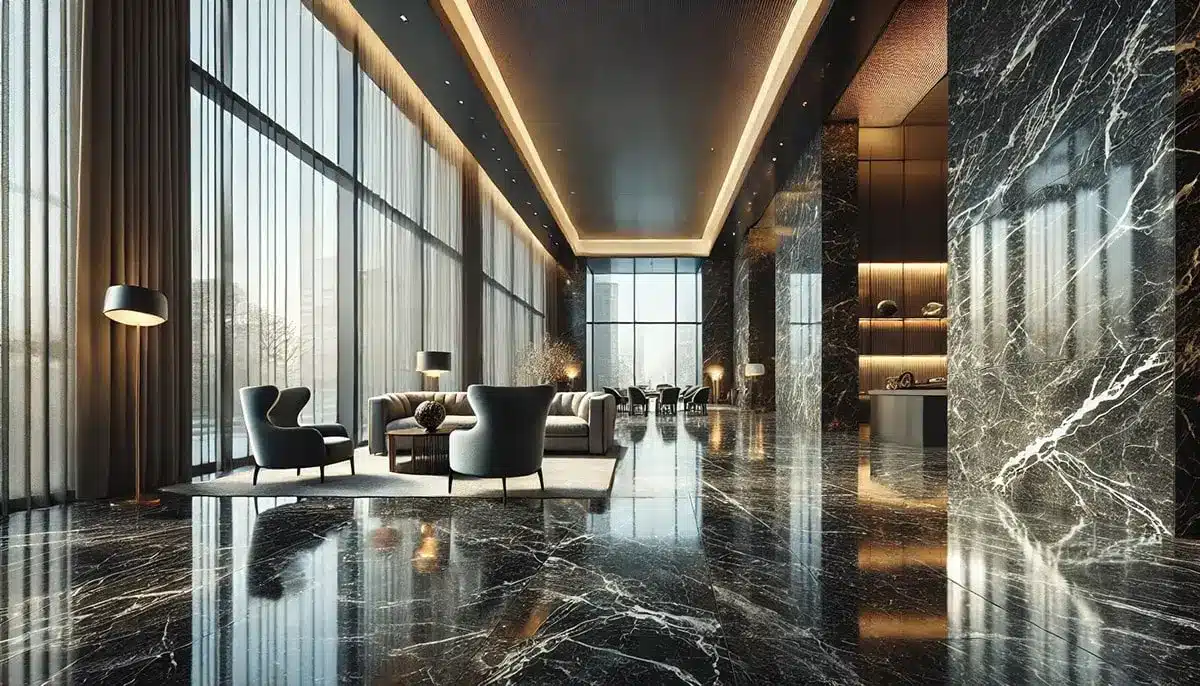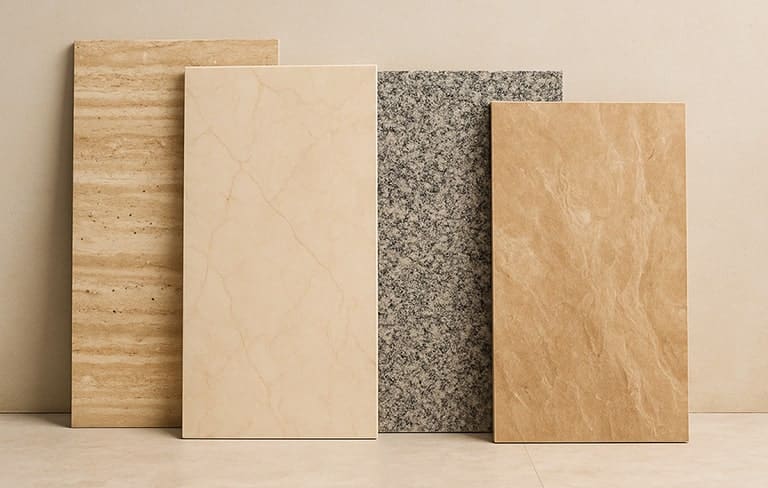
Marble; Features, Applications & Benefits
2025-02-02
Chinese (Crystal) Stone & Its Applications in the Construction Industry
2025-02-06Everything You Need to Know About Granite Stone
Granite is one of the most widely used and popular building stones, employed in various projects ranging from construction to interior design and landscaping. Due to its high durability, natural beauty, and resistance to environmental factors, it is an ideal choice for many applications. In this article, we will thoroughly examine the features, advantages, disadvantages, and applications of granite stone.
What is Granite Stone?
Granite is an intrusive igneous rock formed from the cooling of magma deep within the Earth. It primarily consists of quartz, feldspar, and mica minerals, which contribute to its crystalline structure and exceptional durability. Granite is available in a variety of colors, including black, white, gray, red, and green, depending on its mineral composition.
Features of Granite Stone
- High Strength: One of the most important characteristics of granite is its resistance to pressure, abrasion, and impact.
- Long Lifespan: This stone has significant resistance to environmental factors such as moisture, heat, and chemicals.
- Natural Beauty: The diverse textures and colors of granite add a unique aesthetic appeal to any space.
- Heat Resistance: Due to its mineral composition, granite does not deform under high temperatures.
- Easy Maintenance: Granite can be cleaned easily with a simple wash and is resistant to stains and scratches.
- Low Water Absorption: The low porosity of granite makes it suitable for use in humid environments.
Disadvantages of Granite Stone
- Heavy Weight: Due to its high density, granite requires strong structural support in buildings.
- Relatively High Cost: Compared to some other building stones, granite tends to be more expensive.
- Difficult Installation: Cutting and installing granite require specialized equipment and skilled labor due to its hardness and weight.
Applications of Granite Stone
- Flooring: Its high durability and aesthetic appeal make granite a popular choice for hotel floors, commercial centers, and residential buildings.
- Building Facades: Due to its longevity and resistance to weather conditions, granite is widely used in building exteriors.
- Kitchen Countertops: Its smooth, durable, and beautiful surface makes granite an excellent choice for countertops and kitchen islands.
- Stairs and Staircases: Granite is used for both interior and exterior staircases due to its high strength.
- Paving and Walkways: Resistance to abrasion and weather conditions makes granite ideal for landscaping and paving.
- Decorative Elements: Sculptures, fountains, and other decorative elements are often made from granite.
Comparison of Granite with Other Building Stones Compared to marble, granite is harder and more durable, making it more resistant to scratches and acidic substances. In contrast to travertine, granite has lower water absorption, making it more suitable for humid environments.
How to Maintain Granite Stone
- Use mild detergents and a soft cloth to clean it.
- Regularly apply sealers to prevent staining.
- Avoid placing extremely hot objects on granite surfaces without protection.
Conclusion
Due to its outstanding features, such as durability, high resistance, natural beauty, and color diversity, granite is one of the most popular building stones. Despite its higher cost and weight, it remains a top choice for many construction and interior design projects. Choosing granite as a high-quality material is a worthwhile investment that enhances both the longevity and aesthetics of building projects.





